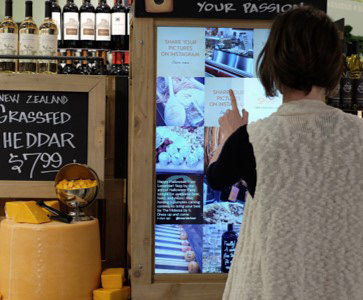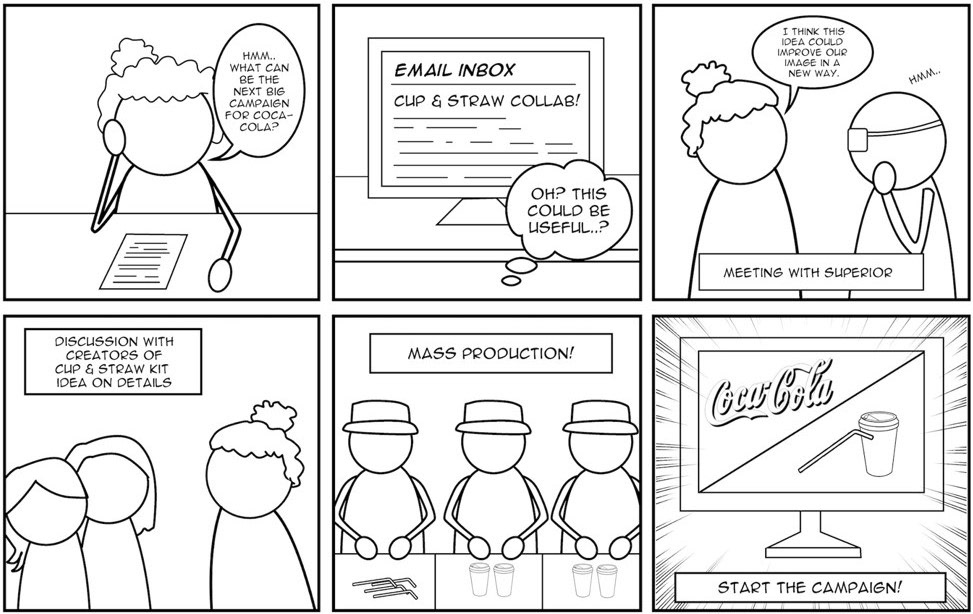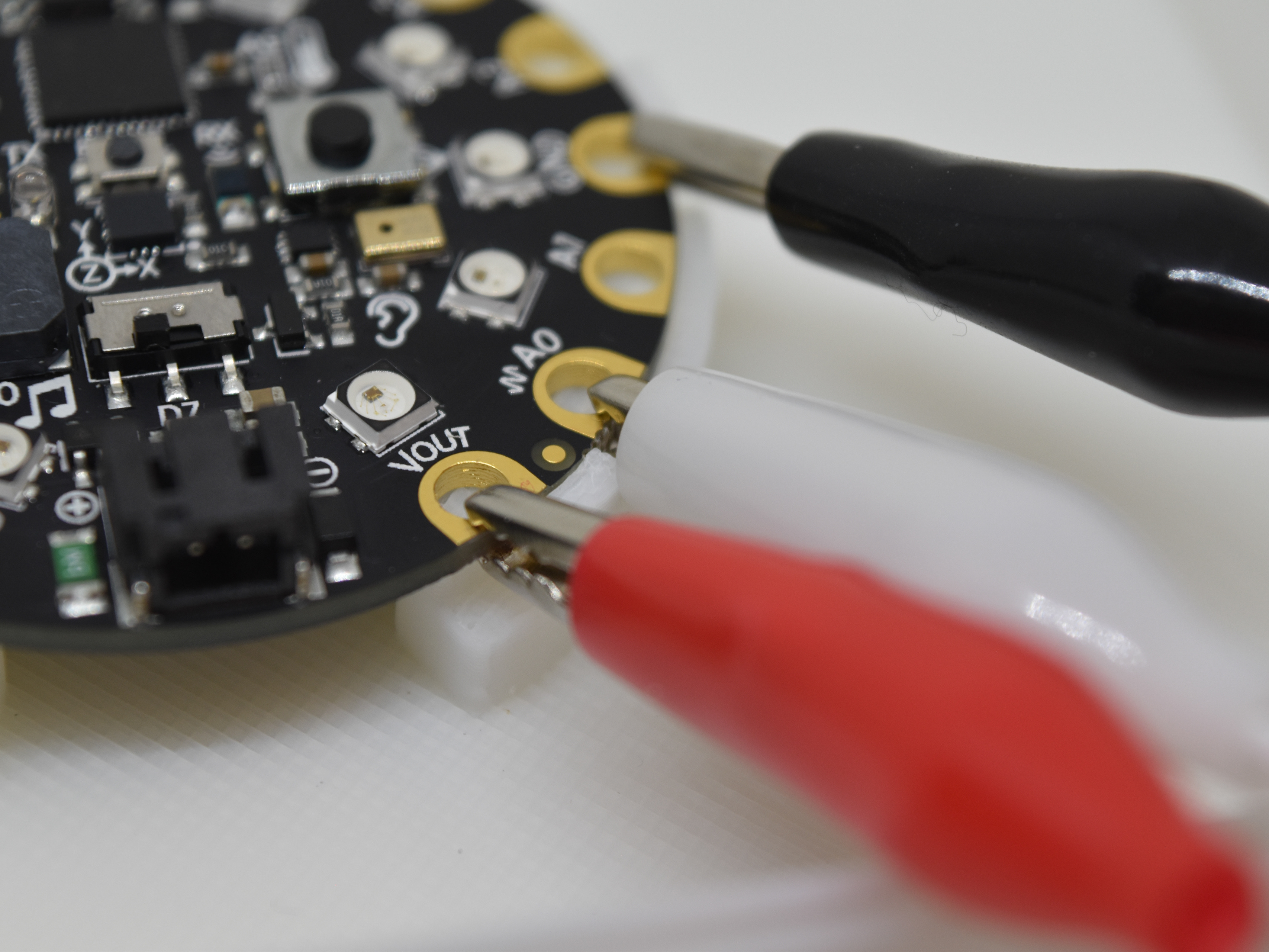Overview
In this project, I looked at how to solve a sustainability problem on campus. The research part of the project was performed individually and the design part in a team of two. My team decided to focus on plastic waste. Our solution was a reusable cup, which tracked the plastic you saved.
Research
My research was split into two parts: looking at interactive experiences outside of Georgia Tech and looking at sustainability practices currently used at Georgia Tech. For the first part of my research, I examined a project created in a Whole Foods in Alpharetta, Georgia. For the second part, I researched Georgia Tech's grounds management practices.
Interactive Whole Foods
This experience was created by Second Story, a company that creates interactive experiences. In the store there were four interactive experiences meant to engage shoppers. Previously, Whole Foods had used signs to attempt to teach shoppers about sustainability. However, the signs had too many words so shoppers ignored them. In the experience, Second Story created four interactive experiences: Farm Meets Table, Wise Wood, Perfect Pairings, and Whole Body Mirror. Each of these experiences allowed customers to immerse themselves in information about their groceries with physical interactions and motions.
Significance
This project had the potential to change how we perceive stores. They could become places to discover and connect, instead of just places to shop. This project shows that ordinary places can be opportunities for education. And even big companies can invest in people learning, instead of just making money.
Questions
Is this combination of sustainability and commercialism helpful? Are shoppers learning or just having fun? Does it matter if they’re learning as long as they’re thinking about sustainability?




Georgia Tech Grounds Management
Since 2018, the campus has received four stars out of four from PGMS Landscape management for creating attractive and sustainable grounds. The campus attempts to divert as much waste from landfills as possible. To do so, the groundskeepers reuse natural waste for mulch, collect leaves, use mulching mowers, and collect fallen branches for wood chips. They will also use fallen trees when building structures. To prevent rain water from leaving campus, the groundskeepers build rain gardens and collect water in cisterns to use for irrigation.
Using Sheep to Remove Kudzu
This project was started in 2014. Georgia Tech chose sheep from the various kudzu removal options, because sheep are the best choice for the environment. The sheep came to campus several times to make sure that the kudzu was entirely removed. Whenever the sheep were on campus, the students were told to ignore them. However, the sheep on campus made me think of when petting zoos are brought on campus to help student health.
Questions
How could students have become involved in the kudzu project? How can fun events like petting zoos, which help mental health, be tied to sustainability? How can we involve students in projects more often to create a community?


Individual Brainstorming
The idea I had was to make a choice using waste. You place an item into a trash bin. There's a sensor in the rim of the bin that reads that an item is being placed within. Your choice then shows up on a screen above the trash bin. You can see how throwing away trash has changed the story. This interaction would cause students to notice the action of throwing items away and give it more thought than usual.
Significance
In this idea, trash becomes something more than a throwaway object. Humans begin to cultivate a different relationship with waste. People are connected with the power of their choices. Both the waste objects and people are given agency to make choices.
Questions
Would students be interested in this type of interaction? Will students put waste in the wrong bins to make choices? If we add a step to help identify that waste is going in the correct bin, does that make the process tedious? Will there be more or less waste in the bins than usual?
Group Brainstorming


Initial Concept
Our initial concept focused on a cup and straw set with a barcode. With this idea, we aimed to draw students’ attention to plastic waste created every day.
Importance of Problem
Plastic affects many animals: fish, birds, turtles, dolphins, sharks, whales, and even humans. While many people don't think of plastic affecting them after they've used it, when plastic makes its way into the ocean, it will then eventually make its way into human bodies as micro-plastics in the food we eat. "More than 1,200 species are impacted by plastic, through ingestion or entanglement—both of which can sicken or even kill them." (5gyres)
Refining the Concept
After discussing our concept with our peers, we realized that the cup kit did not have enough interaction with the user. We decided that going forward, we could use a machine, like a Coca Cola machine that's already associated with cups to pair with our cup.
In this new concept, we considered how the cup might react to the liquid filling it. The act of using the cup could cause the outside design to change or reveal a new design.



Associated Research
Vessyl
The cup identifies any drink that’s poured into it and notes the nutritional values of what you’re drinking, even if it’s a homemade drink. It takes advantage of the fact that most people already are willing to carry around water bottles.
ShowTime Vending
A vending machine that’s connected to the internet, allowing users to show performances to an online audience in an attempt to win a free soda. After the performance, the soda can is tied to the performance video via the barcode.
How far will people go for Fantastic Delites?
A vending machine experiment in which the machine is placed in a public area and people are asked to perform tasks to receive treats. As people watch others using the machine, they’re drawn in and engaged by the behavior of the users.
New Concept
After researching some other projects which focused on cups or machines, we decided to change our concept to the following idea:
Students receive a straw and cup kit. When they go to soda machine, the machine scans the individual student's barcode and shows the story of waste saved.
On the screen, students will see the plastic they personally have saved, the amount the university has saved, and the amount that has been saved worldwide by these reusable cups.
Then, as the student's cup fills with their drink, the design will thermally react to the liquid. The plastic waste shown on the outside of the cup will disappear, revealing ocean animals swimming freely.

Personas and Storyboards






Creating the Prototype
While I didn't have many resources at my disposal without access to campus facilities, I decided that the best way to display our idea was with a prototype. So I created a design that could wrap around an ordinary cup to show how the color change part of the design functioned. I also created a cardboard cutout which would act as the machine for a demonstration.



Final Design
Along with our final prototype and design, we created a zine to showcase our idea. The zine was distributed through Georgia Tech's sustainability department, so that other students could consider the projects created with the environment in mind.
Solving the Problem
The design is a set of tools anyone could use and most likely would need. By theoretically collaborating with Coca-Cola, the usage of the cup could become more widespread (outside of Georgia Tech). With widespread usage come widespread habits. The use of the cup could also be incentivized with discounts or for humane reasons.



Takeaways
Prototyping
You don't need access to advanced facilities or tools to create a prototype, which shows the function of a design. My prototype allowed me to experience what it would be like to actually use the cup and machine that we had designed.
Interaction
When designing an interaction, you should consider how the physical and digital mesh, and how to create output that engages the users. In this project, we decided to include the color change on the cup, so that when users learned about the waste they saved, they could also visually see a physical change happening.










